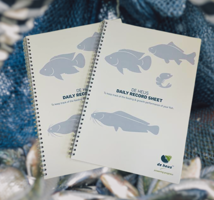The importance of record keeping in tilapia farming
Tilapia is a popular fish for farming because it grows fast and sells well. But to make your tilapia farm profitable and sustainable, it’s important to keep good records. This helps you understand what’s happening on your farm, track the performance, and make adjustments when needed.

What is record keeping in tilapia farming?
Record keeping means writing down everything that happens on your farm. This includes:
- Water quality parameters (temperature, pH, dissolved oxygen levels)
- Stocking (number of fish per unit area)
- Feeding schedules (type and quantity of feed)
- Growth rates (weight and size of fish)
- Health records (disease outbreaks, treatments administered)
- Harvesting data (timing and weight of harvested fish)
- Financial records (expenses and revenues)
Why is record keeping important?
- Better management and decision
With accurate records, you can track how well your fish are growing and how much feed they need. This helps you make better choices about feeding and stocking, so you get the best production. - Improved biosecurity
Tilapia can get diseases that can hurt your farm. By keeping health records, you can spot disease patterns early and take steps to stop them from spreading. - Cost control and financial management
Good records help you track all the costs on your farm, like feed and labor. You can see where to save money and make your farm more efficient, which is key for profit and sustainability. - Regulatory compliance
In many places, fish farms have to follow rules about the environment and health. Sometimes, you get a permit to grow a certain number of fish, and it’s important to stay within those limits to avoid problems with the law. By keeping good records, you can show that you follow the rules and avoid fines. - Sustainability and environmental impact
By watching water quality and feed usage, you can reduce waste and lower the environmental impact of your farm. This makes your farm more sustainable.
Best practices for good record keeping
1. Set a routine
Set a consistent schedule for updating records. Daily checks for stocking and sampling the fish.
2. Train staff
Make sure everyone on your farm knows how to keep records properly and why it’s important. Good records give you reliable data.
3 Review the data
Look at your records often to find trends. This helps you see growth patterns, feeding efficiency, and possible health issues, so you can manage the farm better.
For more information on effective record keeping in tilapia farming, contact our specialists today!
They can provide you with the guidance and resources you need to optimize your farm's performance.



